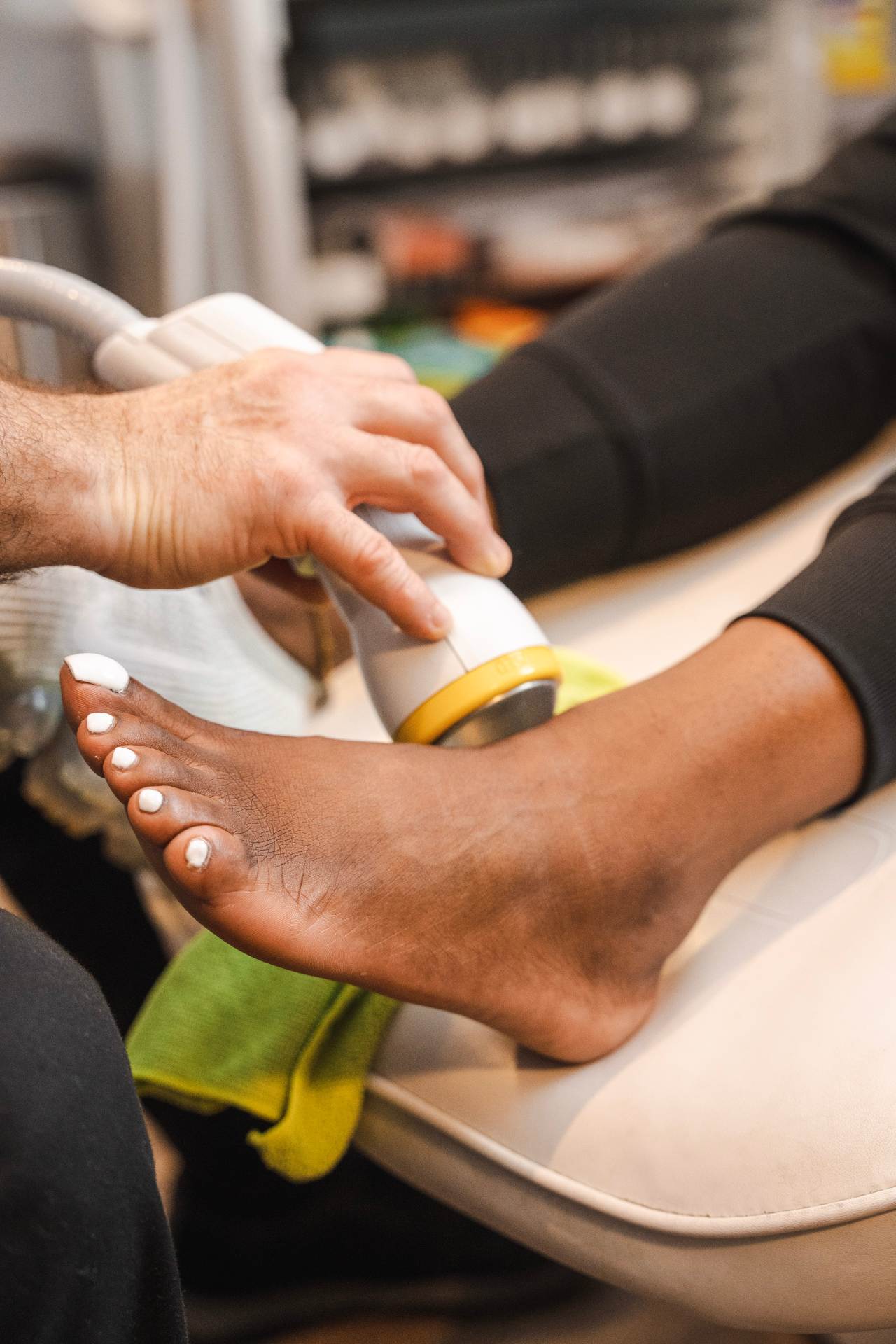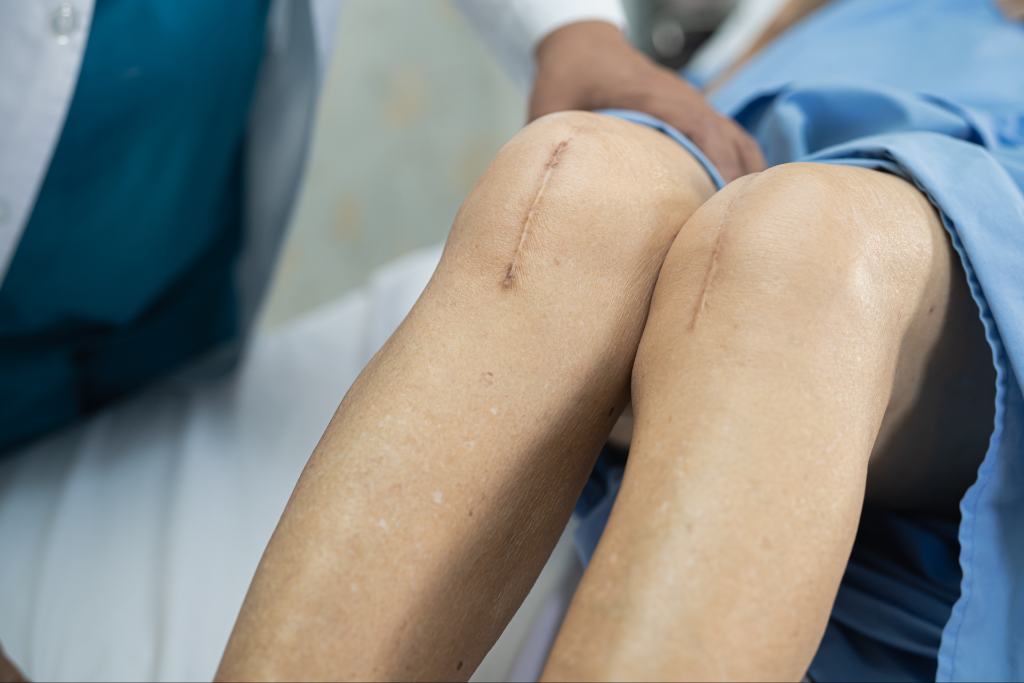Ankle pain is a relatively common condition that can affect people of all ages and backgrounds. acute ankle sprains are frequently encountered and rank among the most prevalent musculoskeletal injuries. Moreover, these sprains tend to recur at a high rate, leading to the development of chronic ankle instability. While various treatment alternatives exist, not all yield satisfactory results, leaving patients in pursuit of other effective solutions to alleviate their discomfort. Recent research suggests that shockwave therapy could be a successful treatment for managing ankle pain without the high costs or adverse effects of surgery and prescription drugs.
In this blog post, we’ll explore:
- Reasons for Ankle Pain
- Shockwave Therapy Advantages for Ankle Pain
- The Working Mechanism of Shockwave Therapy
- What Is The Nature of a Shockwave?
- How do Shockwaves Treat Ankle Pain?
- The Various Forms of Shockwave Therapy
- Identifying the Right Candidate for Shockwave Therapy
- Navigating Through the Shockwave Therapy Procedure
- Potential Adverse Reactions to Shockwave Therapy
- The Best Shockwave Therapy for Ankle Pain
Reasons for Ankle Pain

Ankle pain can stem from numerous sources, from poor walking habits to underlying medical problems. Here are some of the typical causes of ankle pain:
- Ankle Sprains: Overstretching or tearing of the ligaments, often due to incorrect movements, can lead to ankle sprains and consequent pain.
- Arthritis: This degenerative joint disease can impact the ankle, causing stiffness and pain.
- Fractures: Broken bones in the ankle can cause severe pain.
- Tendonitis: Inflammation or irritation of the tendons in the ankle can lead to pain.
- Sports Injuries: Sports-related activities can result in injuries to the ankle, leading to pain.
- Medical conditions like gout or neuropathy: These conditions can induce chronic ankle pain.
It’s important to note that these are just some of the most common causes of ankle pain. If you are experiencing ankle pain, you can learn if your condition is suitable for treatment and try shockwave therapy with our New Patient Special.
Considering Shockwave Therapy?
Try SoftWave Therapy for just $69. Non-invasive healing that reaches deeper.

Shockwave Therapy Advantages for Ankle Pain
Shockwave therapy, a promising non-invasive method for treating ankle pain, can offer numerous benefits. The therapy employs high-energy shockwaves to stimulate healing in the affected region. Here are some benefits of using shockwave therapy for ankle pain:
Prompt Healing
Shockwave therapy is a procedure that utilizes high-energy sound waves to trigger the body’s natural healing response. This aids in accelerating the repair of damaged tissues, such as muscles and ligaments, making it particularly useful for those suffering from persistent or recurrent ankle pain.
Decreased Dependence on Medications
Many conventional treatments for ankle pain involve medications that can have undesirable side effects. Shockwave therapy provides a medication-free alternative that reduces the need for pain medication or other interventions. It is an attractive choice for those who prefer treatments without pharmaceuticals.
Enhanced Quality of Life
Ankle pain can significantly affect one’s quality of life, hampering daily activities or enjoyment of hobbies. Shockwave therapy can help alleviate pain and increase mobility, enabling patients to resume their regular activities and enhance their quality of life.
Safe and Non-Invasive
Unlike many ankle pain treatments, shockwave therapy is safe and non-invasive. It doesn’t require cuts or anesthesia and carries a low risk of complications. This makes it an excellent choice for those wanting to avoid more invasive treatments.
Overall, shockwave therapy is a promising treatment for those suffering from ankle pain.
The Working Mechanism of Shockwave Therapy
Shockwave therapy is a non-invasive treatment that uses high-energy acoustic waves to stimulate the body’s natural healing process. Let’s see how it works:
What Is The Nature of a Shockwave?
Shockwaves are quick acoustic pulses characterized by a high-pressure surge followed by a comparatively low-pressure trough. These phenomena are part of our everyday life and can be produced by various sources such as supersonic jets, blasts, lightning, earthquakes, or any other event leading to a change in air pressure.
How do Shockwaves Treat Ankle Pain?
A device generates and safely delivers shockwaves to the painful ankle area. These shockwaves can stimulate healing at the cellular level, enhance blood supply, and initiate the body’s natural healing process.
The Various Forms of Shockwave Therapy
There are several types of shockwave therapy available, with radial shockwave therapy (RSWT), focused shockwave therapy (FSWT), and acoustic wave therapy (AWT) being the most prevalent.
Radial Shockwave Therapy uses a handheld device that applies pressure waves to the skin’s surface. This type of therapy is a popular choice for conditions like plantar fasciitis, Achilles tendinopathy, and tennis elbow. Still, it may not be effective for deeper tissue injuries, and multiple treatment sessions may be needed.
Focused Shockwave Therapy employs a device that delivers high-intensity shockwaves directly to the painful area. This form of therapy is often used for treating chronic conditions like plantar fasciitis and slow-healing bone fractures. However, it can be uncomfortable for some patients, and the treatment intensity may need to be adjusted based on individual needs.
Acoustic Wave Therapy uses a device that administers low-intensity shockwaves to the painful area. This type of therapy is commonly used to improve blood flow, reduce pain and inflammation, and promote tissue healing. It is often used to treat conditions such as erectile dysfunction and cellulite. However, the low-intensity shockwaves may not be effective for treating some conditions.
broad-focused Shockwave Therapy sends high-intensity shockwaves that penetrate a wider and deeper area of tissue compared to focused or radial waves. SoftWave for ankle pain is the only broad-focused shockwave treatment widely available in the US. It can treat the same conditions as traditional focused shockwave therapy while providing superior relief for large joints and muscle issues such as hip, knee, or ankle pain. broad-focused shockwaves may also require fewer sessions compared to radial or focused shockwave treatments.
Identifying the Right Candidate for Shockwave Therapy

Some factors that may make a patient an ideal candidate for shockwave therapy include:
- Patients with chronic ankle pain
- Patients with limited success with other therapies
- Patients who prefer non-invasive treatment options
Patients enduring chronic ankle pain might find shockwave therapy to be an effective treatment. This includes those with conditions such as plantar fasciitis, Achilles tendinopathy, and ankle osteoarthritis. If traditional treatments like medication and physical therapy don’t provide substantial relief, shockwave therapy could offer a promising alternative.
Furthermore, patients who have undergone other therapies with limited success may benefit from shockwave therapy for their ankle pain. These might include individuals who have tried multiple conservative treatment options without experiencing adequate pain relief.
For patients preferring non-invasive treatments, shockwave therapy provides a non-surgical approach that doesn’t require cuts or anesthesia. This can make it an appealing treatment choice for those who wish to avoid more invasive procedures such as ankle surgery.
Considering Shockwave Therapy?
Try SoftWave Therapy for just $69. Non-invasive healing that reaches deeper.

Navigating Through the Shockwave Therapy Procedure
For those contemplating shockwave therapy as a solution for ankle pain, knowing what the treatment process entails is essential. Here, we provide a detailed run-through of the steps involved in shockwave therapy:
- Initial Phase: To start off the treatment, an ultrasound gel is spread over the area of the ankle experiencing discomfort. The shockwave equipment is then delicately placed against the skin.
- During the Treatment: Patients are likely to experience a soft thumping or rhythmic pulsing as the shockwaves target the affected area. A slight sensation of discomfort or pain may be present, but no anesthetics or numbing substances are necessary. Open dialogue between the medical professional and patient helps ensure optimal treatment coverage and monitor progression.
- Post-Treatment: Once the brief procedure, lasting about 10-15 minutes, is completed, patients can usually return to their everyday activities without requiring any recovery period. However, some medical practitioners may advise against strenuous activities or workouts for a day or two.
Potential Adverse Reactions to Shockwave Therapy
Although shockwave therapy is largely seen as a safe and well-accepted treatment, it does carry a minor risk of adverse reactions. The most commonly encountered side effects of shockwave therapy for ankle pain could include:
- A sensation of pain or discomfort during or post-treatment
- Inflammation or bruising
- Skin redness or irritation
- Sensation of numbness or pins and needles
It’s important to highlight that these adverse effects are usually short-lived and minor. The majority of patients can go back to their routine activities straight after the treatment.
SoftWave, an FDA-approved device, provides a reliable and effective means of shockwave therapy for ankle discomfort. The potential adverse effects associated with SoftWave are minimal and non-restrictive. It doesn’t result in bruising or inflammation, and any mild skin redness or tenderness usually subsides within a couple of days.
The Best Shockwave Therapy for Ankle Pain
Are you looking for safe, reliable, and effective relief from ankle pain?
SoftWave therapy is FDA-cleared, patented, and nationally recognized for its leading tissue regeneration technology. Unlike other types of high-energy shockwave treatments, SoftWave is the only shockwave therapy on the market that uses true broad-focused shock waves that treat larger and deeper areas of tissue.
Thousands of patient’s have experienced the benefits of SoftWave for ankle pain, including:
- Little to no side effects
- Short treatment time
- Quick recovery
- Long-lasting results
Find a SoftWave Therapy provider near you or learn more about SoftWave and whether or not you’re eligible for full treatment today!
New Patient Special
Try SoftWave for just $69 at a clinic near you and learn if you’re a candidate for full treatment




